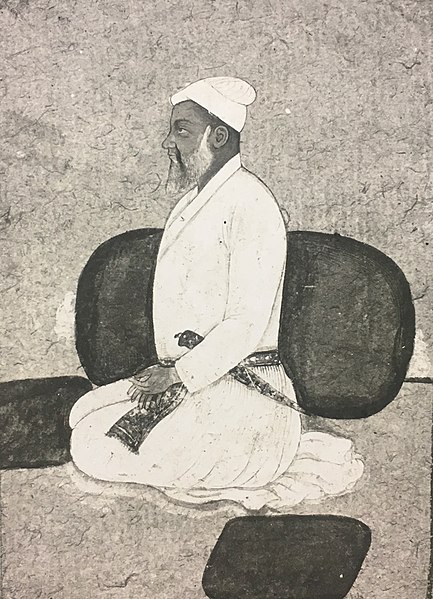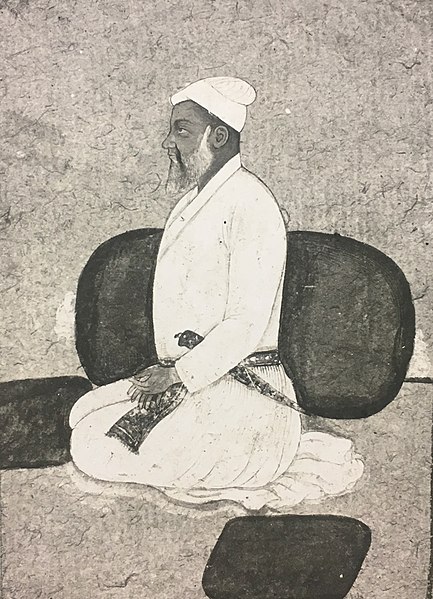NIDHAN SINGH CHUGGHA (1855-1936), a prominent Ghadr leader, was the son of Sundar Singh of the village of Chuggha, in Moga district. A militant revolutionary, he was cited by the British as "art extremely dangerous criminal and one of the worst and most important of the [Ghadr] conspirators." In 1882, Nidhan Singh left home for Shanghai where he worked as a watchman and served as treasurer of the local Gurdwara. He married a Chinese woman from whom he had one son. He lived in Shanghai for many years and then migrated to the United States of America. Shortly after his arrival in the United Ssates, the Ghadr Party was formed by Indian patriots.
ADINA BEG KHAN (d. 1758), governor of the Punjab for a few months in AD 1758, was, according to Ahwal-i-Dina Beg Khan, an unpublished Persian manuscript, the son of Channu, of the Arain agriculturalist caste, mostly settled in Doaba region of the Punjab. He was born at the village of Sharakpur, near Lahore, now in Sheikhupura district of Pakistan. Adina Beg was brought up in Mughal homes, for the most part in Jalalabad, Khanpur and Bajvara in the Jalandhar Doab. Starting his career as a soldier, he rose to be collector of revenue of the village of Kang in the Lohian area, near Sultanpur Lodhi.
Explore the legacy of Sadhu Singh Hamdard, a pioneering journalist and poet who revolutionized Punjabi journalism and literature.
AHWAL-I-DINA BEG KHAN , Persian manuscript of unknown authorship, gives biographical details about Adina Beg Khan, faujdar of Jalandhar. The manuscript forms part of the collection of Persian Manuscripts, Sir H.Elliot\'s Papers, Additional MS. 30780 (ff. 2152-92), Extracts relating to India, vol. VIII. 1 , preserved in British Library, London. Copies of the manuscript are also held by Panjab University Library, Lahore, Sikh Historical Research Department, Khalsa College, Amritsar, and Dr Ganda Singh Collection at Punjabi University, Patiala (25 pages in neat and clear handwriting).
Discover the inspiring story of Thakar Singh, a revered Nankana Sahib martyr who made a lasting impact in his community in the early 20th century.
Discover Bahadur Singh's pivotal role in the 1848-49 Punjab revolt alongside Bhai Maharaj Singh's anti-British efforts. Learn about this historic uprising.
Discover the inspiring journey of Udham Singh, a key figure in the Ghadr movement; from a humble beginning in Amritsar to a revolutionary leader.
Explore the life of Banta Singh Dhamiam, a key figure in the Babbar Akali movement, known for his audacious acts against British rule.
Discover the legacy of Sodhi Vadbhag Singh, a descendant of Guru Hargobind, who led Sikh resistance against Afghan oppression in 18th-century Punjab.
BUDDH SINGH (d. 1816), son of Khushhal Singh, nephew of the leader of the Dal Khalsa, Nawab Kapur Singh, succeeded his father as head of the Singhpuria misl. He inherited territories in the Bart Doab, the Jalandhar Doab and in the province of Sirhind. He built a fort at Jalandhar and reconstructed at a cost of a lakh of rupees the holy shrine and tank of Tarn Taran demolished by Nur udDin, the local Mughal chief.
- 1
- 2




